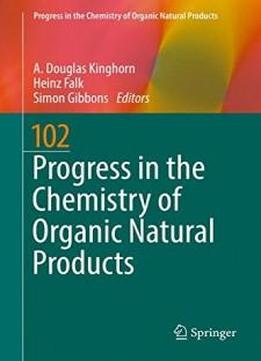
Progress In The Chemistry Of Organic Natural Products 102
by A. Douglas Kinghorn /
2016 / English / PDF
9.2 MB Download
The first contribution reviews the phytochemical, chemical, and
biological literature on members of the ingenane class of
diterpenoids from their first isolation in 1968 through 2015,
highlighting unresolved issues both common to phorboids and
specific to ingenol derivatives. The biogenesis of ingenol
is discussed in the light of the Jakupovic proposal of a
dissection between the formation of the macrocyclic
The first contribution reviews the phytochemical, chemical, and
biological literature on members of the ingenane class of
diterpenoids from their first isolation in 1968 through 2015,
highlighting unresolved issues both common to phorboids and
specific to ingenol derivatives. The biogenesis of ingenol
is discussed in the light of the Jakupovic proposal of a
dissection between the formation of the macrocyclicEuphorbia
Euphorbia diterpenoids and the phorboids, and the clinical
development of ingenol mebutate is chronicled in the light of its
“reverse-pharmacology” focus.
diterpenoids and the phorboids, and the clinical
development of ingenol mebutate is chronicled in the light of its
“reverse-pharmacology” focus.
The second contribution offers a comprehensive view of the
chemical wealth and the taxonomic problems currently impeding
chemical and biological investigations of the
genus
The second contribution offers a comprehensive view of the
chemical wealth and the taxonomic problems currently impeding
chemical and biological investigations of the
genusLaurencia
Laurencia. It addresses the botanical
description and the growth and population dynamics of the genus,
as well as its chemical diversity and ecological relations; the
secondary metabolites as well as their sources of isolation;
and finally the biological activity.
. It addresses the botanical
description and the growth and population dynamics of the genus,
as well as its chemical diversity and ecological relations; the
secondary metabolites as well as their sources of isolation;
and finally the biological activity.











